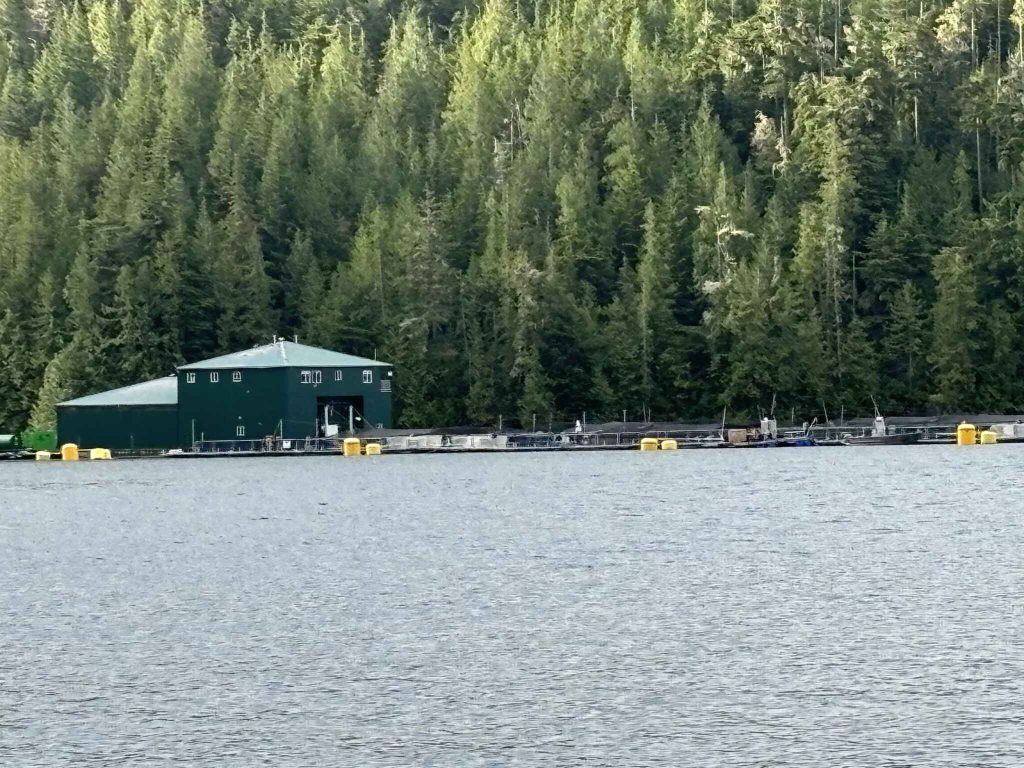
Bob’s Inside Passage kayaking journey through British Columbia’s unforgiving terrain continues to unfold, with both expected and surprising encounters. Today’s excursion carried him through the heart of the Great Bear Rainforest, rushing along Knight Inlet, North America’s longest inlet, which measures 111 kilometers (68 miles). Porpoises danced about the boat. There is so much colorful marine life thriving in these waters, even as they pass by the controversial fish farms that have sparked tensions among the local indigenous populations.
Grizzly Sightings and Conservation Challenges
The day’s goal was clear: to witness grizzlies feasting on salmon, an experience in this rainforest where wildlife and wilderness reign supreme. With the help of indigenous experts who know the territory intimately, Bob found himself deep in the forest, surrounded by the sound of roaring waterfalls fueled by a foot of rain from the previous day. Sure enough, the grizzlies appeared, drawn by the run of salmon in the flooded rivers.
Sherry, an indigenous guide and boat operator with Sea Wolf Adventures, was one of the team members who educated the party on the area’s environmental challenges. She spoke of the fish farms operated by Norwegians, that introduced an invasive species of salmon, disrupting the ecosystem and threatening the wild salmon population—a staple of indigenous diets and culture. Despite significant pushback from local tribes, who banded together and managed to shut down 27 of 30 farms, one tribe’s refusal to oust the remaining farms underscores the ongoing struggle between conservation and external interests.
As if on cue, a gigantic humpback whale breached close, adding a moment of awe to an already incredible day. Normally, Bob would have continued further to the end of Knight Inlet, but the river, swollen by the recent heavy rain, was up nine feet, prompting a stop at Glendale Cove instead. Here, more grizzlies were feasting on the salmon, just as the guides had predicted.
The Journey Continues: From Fossil Beaches to Sea Lion Encounters
After a brief exploration of Glendale Cove, Sherry steered the team toward one of the remaining fish farms. Her account of the Norwegian intrusion and the tribes’ resistance was a sobering reminder of the complex interactions between nature, culture, and industry in these remote regions. As the afternoon wore on, Bob and his group headed towards Blackfish Sound, passing a beach that appeared to be covered in white sand. On closer inspection, it was revealed that the white beach was covered in fossilized clam shells.
The tranquility of the day took a turn as they approached Blackfish Sound. The sea exploded with swells reaching five to ten feet, waves crashing over the boat, slamming it against the water. As they entered Johnstone Strait, the waters calmed just in time for Bob and his team to spot a rookery of sea lions. The massive creatures were not content to just observe; several plunged into the water and began making waves, their movements causing the boat to rock violently. It was a clear territorial display, and Bob’s team respected the warning, maintaining a safe distance as the sea lions asserted their dominance.
As the sun dipped lower, Bob’s journey led him back to Port McNeill, where a drive to the hotel marked the end of another eventful day in this magical landscape. Each day of Bob’s expedition through the Inside Passage brings new deeper connections with the Pacific Northwest and its untamed beauty.









